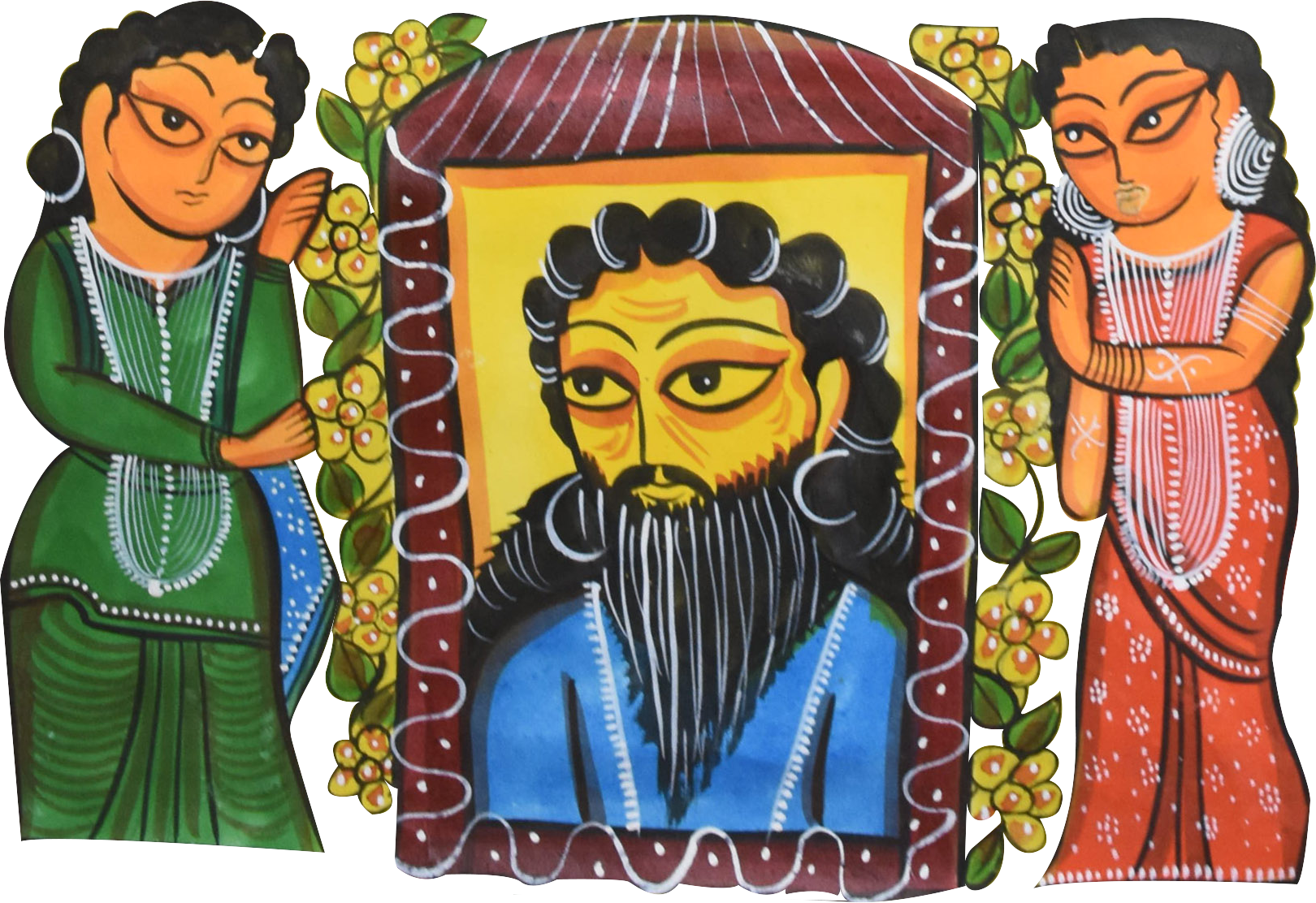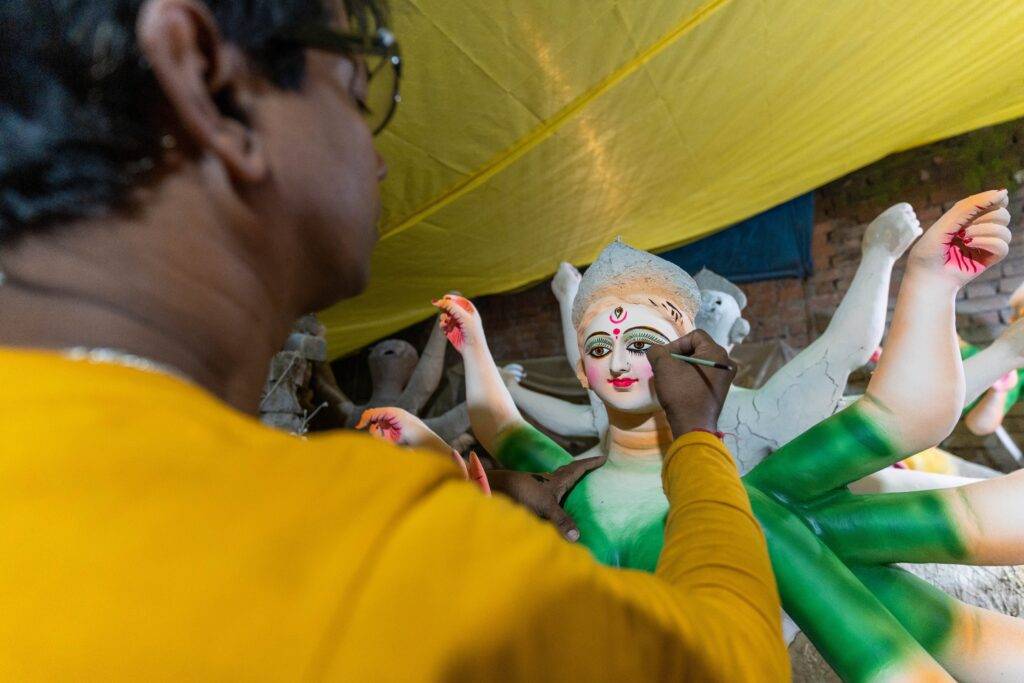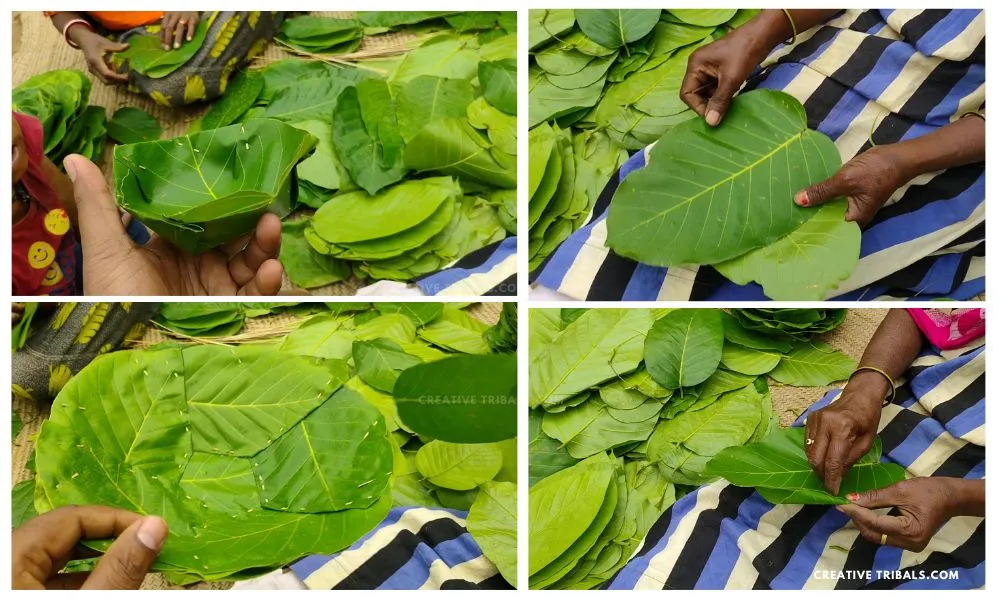
The Enchanting World of Pattachitra Painting
Pattachitra Painting, a mesmerizing form of traditional Indian art, has enchanted art lovers for centuries with its intricate designs and vivid storytelling. Originating from the states of Odisha and Bengal, this ancient art form showcases a rich tapestry of cultural and mythological narratives, brought to life through vibrant colors and meticulous craftsmanship. The history, techniques, and cultural significance of Pattachitra Painting make it a fascinating subject for anyone interested in exploring the depths of Indian heritage.
Introduction to Pattachitra Painting
Pattachitra art, derived from the Sanskrit words ‘Patta’ (cloth) and ‘Chitra’ (picture), represents a unique blend of myth, tradition, and artistry. This traditional art form is renowned for its detailed and intricate designs, often depicting scenes from Hindu mythology and folklore. The artisans, known as Chitrakars, have preserved this heritage through generations, creating masterpieces that continue to captivate modern audiences.
The History and Evolution of Pattachitra Painting
The origins of Pattachitra Painting can be traced back to ancient India, with roots deeply embedded in the cultural and religious fabric of Odisha and Bengal. This art form is believed to have flourished under the patronage of temples and royalty, serving as a medium to convey religious stories and cultural values.


Odisha’s Pattachitra Tradition
In Odisha, Pattachitra Painting is closely associated with the Jagannath Temple in Puri. The Chitrakars from this region traditionally created paintings to adorn the temple walls, depicting tales from the Mahabharata, Ramayana, and the life of Lord Jagannath. These paintings were not just artistic expressions but also served as visual aids for storytelling during religious festivals and ceremonies.
Bengal’s Pattachitra Heritage
In Bengal, Pattachitra, known locally as ‘Patua’, evolved with a distinct style and thematic focus. Bengal’s Pattachitra often portrays stories from the local folklore, epics, and socio-political themes. The Bengal Patua artists are also known for their unique practice of performing songs, known as ‘Pater Gaan’, while displaying their scroll paintings, creating an engaging multimedia storytelling experience.
Techniques and Materials Used in Pattachitra Painting
The creation of Pattachitra Painting is a labor-intensive process that requires exceptional skill and patience. The artists meticulously follow traditional methods, using natural materials to prepare the canvas and colors.


Preparation of the Canvas
The canvas, typically made from old cotton cloth, is coated with a mixture of chalk and gum to create a smooth surface for painting. This prepared canvas, known as ‘Patta’, is then polished using stones to achieve the desired texture.


Natural Colors and Brushes
The colors used in Pattachitra Painting are derived from natural sources. White is obtained from conch shells, black from burnt coconut shells, yellow from turmeric, and red from the minerals in the soil. These colors are mixed with natural gum to enhance their durability. The brushes are traditionally made from the hairs of domestic animals, allowing for fine detailing.






Intricate Detailing and Design
The hallmark of Pattachitra lies in its intricate detailing and bold lines. The artists use a fine brush to outline the figures and fill in the details with precision. The themes often revolve around mythological narratives, religious icons, and scenes from daily life, depicted with an exquisite sense of proportion and symmetry.


The Cultural Significance of Pattachitra Painting
Pattachitra Painting is not merely an art form; it is a cultural emblem that reflects the values, beliefs, and traditions of the communities it represents.
Religious and Ritualistic Importance
In Odisha, Pattachitra plays a significant role in religious rituals and ceremonies. The paintings are used in various temple festivals, particularly the Rath Yatra of Lord Jagannath. During this festival, a special Pattachitra depicting the Trinity of Puri is created and worshipped, symbolizing the presence of the deities.
Social and Economic Impact
The art of Pattachitra also has a substantial socio-economic impact on the communities of artists. It provides a livelihood to many Chitrakars, who rely on the sale of these paintings for their sustenance. The craft has also gained recognition in national and international art markets, boosting the economy and promoting cultural exchange.
Contemporary Relevance and Revival of Pattachitra Painting
In recent years, there has been a renewed interest in traditional art forms, including Pattachitra Painting. Efforts by cultural organizations, government initiatives, and individual artists have contributed to the revival and promotion of this heritage art.
Government and NGO Initiatives
Various government schemes and non-governmental organizations have launched programs to support and promote Pattachitra artists. Workshops, exhibitions, and art fairs provide platforms for artisans to showcase their work and connect with wider audiences. These initiatives also focus on skill development and innovation within the traditional framework.
Integration with Modern Art and Design
Contemporary artists and designers are increasingly incorporating Pattachitra motifs and techniques into modern art and design. This fusion of traditional and contemporary styles has opened new avenues for Pattachitra, making it relevant in today’s artistic and commercial landscapes. Products such as apparel, home decor, and accessories featuring Pattachitra designs are gaining popularity, bridging the gap between ancient art and modern consumers.
Raghurajpur artist village: The Heart of Pattachitra
Raghurajpur, a heritage crafts village in Odisha, is the epicenter of Pattachitra Painting. Recognized as a hub of traditional arts, this village is home to numerous skilled artisans who have dedicated their lives to preserving and propagating Pattachitra. Walking through Raghurajpur, one can witness the vibrant and detailed works of art adorning almost every household, reflecting the community’s deep-rooted connection to this ancient craft.


Pattachitra Painting: A Personal Perspective
As someone who has had the privilege of witnessing the creation of Pattachitra Painting firsthand, I can attest to the dedication and passion of the Chitrakars. The experience of watching an artist meticulously paint fine details with steady hands and unyielding focus is truly
Visiting Raghurajpur provided an even deeper understanding of this art form. The village itself is a living museum, with each home a testament to the dedication and talent of the artisans. Engaging with the artists, hearing their stories, and seeing the process up close reinforced the importance of preserving and promoting this incredible heritage. awe-inspiring. Each stroke, each color, tells a story that transcends time, connecting us to a rich cultural legacy.
FAQs about Pattachitra Painting
What is the origin of Pattachitra Painting?
Pattachitra Painting originated in the states of Odisha and Bengal, with a history dating back to ancient India. It is closely associated with the Jagannath Temple in Puri, Odisha, and the local folklore of Bengal.
What materials are used in Pattachitra Painting?
Pattachitra Painting uses natural materials, including cotton cloth for the canvas, chalk and gum for coating, and natural colors derived from sources like conch shells, burnt coconut shells, turmeric, and soil minerals.
What themes are commonly depicted in Pattachitra Painting?
Common themes in Pattachitra Painting include scenes from Hindu mythology, religious icons, local folklore, and socio-political narratives. The paintings often portray tales from the Mahabharata, Ramayana, and the life of Lord Jagannath.
How is Pattachitra Painting relevant today?
Pattachitra Painting remains relevant today through various revival efforts, government initiatives, and its integration with modern art and design. Contemporary artists and designers are incorporating Pattachitra motifs into products like apparel, home decor, and accessories.
What is the significance of Pattachitra in religious rituals?
In Odisha, Pattachitra holds significant religious importance, particularly during temple festivals like the Rath Yatra of Lord Jagannath. Special Pattachitra paintings are created and worshipped, symbolizing the presence of the deities.
How can one support Pattachitra artists?
Supporting Pattachitra artists can be done by purchasing their artwork, participating in workshops and exhibitions, and promoting the art form through social media and word of mouth. Additionally, supporting organizations that work towards the preservation and promotion of traditional arts can also make a significant impact.




